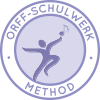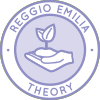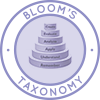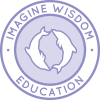
Surpassing Existing Standards
This page shares suggestions for surpassing existing standards when using the Education for Life program. We discuss the details of this component with the following sections:
- Surpassing Existing Standards Overview
- Why Open Source this Component
- Ways to Contribute
- Significant Contributors to this Component
- Surpassing Existing Standards Details
- Summary
- FAQ
- Resources
RELATED PAGES
EDUCATION OVERVIEW | HOW TO USE THIS PROGRAM | OUR OPEN SOURCE PURPOSE










SURPASSING EXISTING STANDARDS OVERVIEW
 When applied fully, the Education for Life program should provide what’s needed to surpass even the strictest education standards of traditional educational institutions. This page deals with the specifics of how to achieve this. It combines with the Objective Data and Analysis section and the Information Maintenance and Sharing section to provide the necessary and objective assessment, analysis, and transfer of education progress and information to options outside of the Education for Life program.
When applied fully, the Education for Life program should provide what’s needed to surpass even the strictest education standards of traditional educational institutions. This page deals with the specifics of how to achieve this. It combines with the Objective Data and Analysis section and the Information Maintenance and Sharing section to provide the necessary and objective assessment, analysis, and transfer of education progress and information to options outside of the Education for Life program.

WHY OPEN SOURCE THIS
 Objectively showing how the Education for Life program surpasses existing educational standards is important for validating its effectiveness as an alternative education approach. Sharing and helping to spread this as a more holistic and effective educational method is part of our strategy for creating positive and permanent global transformation through open source and self-replicating teacher/demonstration hubs. This is directly in alignment with our Purpose and Mission, our Global-transformation Pledge, and Highest Good philosophy for open source creation, sharing, and making a difference in the world.
Objectively showing how the Education for Life program surpasses existing educational standards is important for validating its effectiveness as an alternative education approach. Sharing and helping to spread this as a more holistic and effective educational method is part of our strategy for creating positive and permanent global transformation through open source and self-replicating teacher/demonstration hubs. This is directly in alignment with our Purpose and Mission, our Global-transformation Pledge, and Highest Good philosophy for open source creation, sharing, and making a difference in the world.
WAYS TO CONTRIBUTE TO EVOLVING THIS EDUCATION PROGRAM WITH US
SUGGESTIONS | CONSULTING | MEMBERSHIP | OTHER OPTIONS
SIGNIFICANT CONTRIBUTORS TO THIS COMPONENT
Ellen Ross Kaspi: Progressive Educator and Mind/Body Modality Specialist
Jessica Wienke: Organizational and Leadership Development Consultant
Sangam Stancza: Ph.D. and P.E.
Stephanie VanderKallen: Mental Health Professional and Teacher
SURPASSING STANDARDS DETAILS
 As stated above, objectively showing how the Education for Life program surpasses existing educational standards is important for validating its effectiveness as an alternative-education approach. To assure all areas of importance are covered, traditional and nontraditional learning programs are incorporated into the education program and the Objective Data and Analysis Process is used to monitor results. This should allow a child to exceed expectations on exams and test into colleges before the traditional age, if desired.
As stated above, objectively showing how the Education for Life program surpasses existing educational standards is important for validating its effectiveness as an alternative-education approach. To assure all areas of importance are covered, traditional and nontraditional learning programs are incorporated into the education program and the Objective Data and Analysis Process is used to monitor results. This should allow a child to exceed expectations on exams and test into colleges before the traditional age, if desired.
We explore the details of this with the following sections:
- Individualization
- Integration of Traditional Learning Programs
- Integration of Nontraditional Learning Programs
- Incorporation of Advanced Evaluation Protocols

INDIVIDUALIZATION
Individualization of each Learner’s program is the most direct way to address learning challenges and surpass traditional educational standards. The Education for Life program focuses heavily on individualization and the following components can be used by themselves or in conjunction with each other to achieve this:
- Lesson Plans for Life: Weekly theme-based lesson plans for all subjects & learning levels and designed for individualization using the co-creative process explained in the Lesson Plans How-to Page.
- Teaching Strategies for Life: Education strategies for all subjects and ages and purposed to incorporate and leverage the educational areas and approaches a Learner likes most to help them engage all other areas also.
- Evaluation and Evolution Structure: Used to create and maintain a collaborative “Growth Portfolio,” this process focuses on the Learner’s goals and aspirations as the path to making learning more fun and effective.
- Foundations of Outstanding Leaders, Teachers, and Communicators: These strategies are designed to help the both the Learner and Educator to achieve their learning and teaching goals. When used cooperatively, they help all involved to help each other and grow even more.
- Objective Data and Analysis Process: Testing and evaluation methods to help identify strengths and areas that could benefit from additional focus using the other tools in this list.
Any of the above bullets can be used to help individualize an educational program in almost any environment. When combined, they individualize a program even more and work even better.

INTEGRATION OF TRADITIONAL LEARNING PROGRAMS
Because it is specifically designed to be individualized, co-creative, and collaborative, integration of traditional learning programs and curriculum is easy with the Education for Life program. So is integrating this program into other educational programs. If there are other learning programs, methodologies, resources, and/or approaches you consider effective, include them! Traditional textbooks, classroom learning approaches, testing, etc. can all be integrated as a group approach or individually.
INTEGRATION OF NONTRADITIONAL LEARNING PROGRAMS
Because it is specifically designed to be individualized, co-creative, and collaborative, integration of nontraditional learning programs and curriculum is also easy with the Education for Life program and so is integrating this program into other nontraditional educational programs. As part of this, we’ve done our best to evaluate and integrate the best of what we could learn from the most common alternative education models. Click the following icons to view the results of our research into each one:








INCORPORATION OF ADVANCED EVALUATION PROTOCOLS
Incorporation of advanced evaluation protocols can work well with the Education for Life program too. This can be done with the specific intent to pass tests for college admission or as part of the Objective Data and Analysis Process. Traditional Assessment / Standards / Norms that could be integrated include:
- State or national prep books and/or teacher’s manuals
- SAT/ACT testing
- International tests and college preparation apps and tools
- Other tools from education methodologies like Montessori, Waldorf, Multi-intelligences, etc.
We’ve found that even advanced protocols like SAT/ACT test resources can be used with advanced Learners, and at ages as young as 5 or 6, IF proper guidance is included to keep the learning process fun and tailored to the individual. Keep in mind though, because of the limitation of exam-based learning, it is extremely important to offer many types of teaching, learning, and concept exploration in your learning program for each student. This applies even for students who are specifically studying and preparing to attend college.
Research on exams and testing has shown over reliance on this kind of learning can narrow thinking. A person with mostly test-based learning experience tends to seek “the right answer” rather than thinking critically, outside the box, and/or thinking for themselves. They may give up more quickly when they don’t know the answer and not even try creative problem solving. For this reason, this kind of testing has been equated to “spoon-feeding knowledge” because it focuses on memorization and regurgitation for short-term results rather than on comprehension, understanding, retention, and a broader application of knowledge.
To maximize benefits when incorporating advanced evaluation protocols like the ones included above, make them part of a broader and more comprehensive approach. Use them as one tool of many and be sure to keep your approach individualized and appropriate for the individual, their learning level and style, and their goals.
SUMMARY
 When applied fully, the Education for Life program should provide what’s needed to surpass even the strictest education standards for traditional educational institutions. This page is meant to be combined with the Objective Data and Analysis page and the Information Maintenance and Sharing page to provide the necessary and objective assessment, analysis, and transfer of education progress and information to programs outside of the Education for Life system.
When applied fully, the Education for Life program should provide what’s needed to surpass even the strictest education standards for traditional educational institutions. This page is meant to be combined with the Objective Data and Analysis page and the Information Maintenance and Sharing page to provide the necessary and objective assessment, analysis, and transfer of education progress and information to programs outside of the Education for Life system.

FREQUENTLY ANSWERED QUESTIONS
Q: Are all aspects of this Evaluation and Evolution component necessary?
We consider all aspects listed above as important, but how a person or organization chooses to use them is up to that individual or group. To maximize the flexibility and application options, all components are designed to be usable in combinations, as part of the complete One Community Education for Life program, or as stand-alone components.
Q: Above you say, “if you are doing it right, it is fun for everyone.” How do you make it fun when it seems disciplinary action is in order?
People’s and organizational approaches to discipline are diverse. If disciplinary action is something you or your organization has decided is necessary, our suggestion is to still maintain a positive and Learner-focused approach. This would mean focusing on the Learner’s goals, how their behavior could be changed to help them better achieve their goals, and then guiding the Learner to come up with the best approach for moving forward and any consequences associated with not living up to this self-created path for progress.
Q: What if I have my own evaluation system that I like better, can I use that instead?
Of course! All aspects of the Education for Life program are designed for use in any educational environment and with or without inclusion of any other aspect of the program.
OTHER RESOURCES
We're building a resource section. Click here if you have a suggestion or resource for this page.
OPEN SOURCE SUBJECT RESOURCES (click icons for complete pages)
OPEN SOURCE CURRICULUM OUTLINES (click image for summaries and links to complete pages)
CARE




SHARE




PLAY




OPEN SOURCE TEACHING METHODOLOGY SUMMARIES
Montessori | Waldorf | Orff | Reggio | Multi-Intelligence | Bloom's Taxonomy | Study Tech | I-WE
INDEX OF ALL THE ONE COMMUNITY OPEN SOURCE LESSON PLANS
THE WORLD'S LARGEST ONLINE FREE EDUCATION RESOURCE ARCHIVE
RELATED CONTENT AND OTHER RELATED RESOURCES
We're building this resource section. Click here if you have a suggestion or resource for this page.
- A school that employs a variety of approaches to accommodate diverse learners without academic tracking
- Article: “How Should We Measure Student Learning? 5 Keys to Comprehensive Assessment”
- Article: “What Schools Could Use Instead Of Standardized Tests”
- Article: What Are Some Types of Assessment?
- Article: “Formative and Summative Assessments in the Classroom”
- Article about Checking for Learning
- Article: “Goodbye to Grades: Windsor Locks Schools Pioneer a New Way to Assess Students”
- About Expeditionary Learning Schools – A Resource of Resources
- Send us your ideas
 One Community
One Community


